Load forecasting is very important task in for the developing countries, to utilize the power more efficiently. In the developing countries like India, Ethiopia, Ghana, there is lot of power is wasting in the generation, and transmission and distribution. It is due to mainly lack of forecasting the daily load. In this paper we had conducted a practical experiment to estimate load demand of Adama Science and Technology University, Ethiopia. In this paper we are using the short term load forecasting. The data we collected from the ASTU is the previous year data. To analysis the results we used the Mandani model in the Fuzzy logic methods. To reduce the error of the load forecasting of the fuzzy method has been used with the Artificial Neural Network. The error range is reduced nearly 3%. The programs have been ruined in the Matlab environment.
Keywords |
| Neural Network, Fuzzy logic, Load forecasting. |
INTRODUCTION |
| FORECASTING for vision load demand prerequisite is the most imperative key for power system planning. The
ability of the generation, transmission and distribution capacities are strictly dependant on the precise energy and load
forecasting for that system Power system expansion planning starts with a forecast of anticipated future load requirements.
Estimates of both demand and energy requirements are crucial to valuable system planning. The term forecast refers to
projected load requirements determined using a systematic process of defining future loads in sufficient quantitative detail
to permit important system expansion decisions to be made. The Energy Management System demands accurate load
forecasting and short term Load Forecasting provides better and truthful results [1]. |
| To predict the load forecasting there are many types of method are there in the present industry. The fore casting
may do based on the time period. Long Term Forecasting, in this type of forecasting the forecasting period is long may be
for 10 years. The planning of maintenance, scheduling of the fuel supply etc. calls for medium term load forecast. The
medium term load forecast covers a period of a few weeks. It provides the peak load and the daily energy requirement.
Another type of forecasting is Short Term Forecasting. Short term Forecasting gives the accurate values to predict the load
demand. This short term forecasting covers to predict the load for a short term period of one week. The method that has
been hassled upon is Short term load forecasting. A number of methods and techniques have already been worked out for
prediction of load such as Artificial Neural Networks (ANN), Fuzzy Logic, and Regression Methods etc. Among all these
Neural Networks are having the properties of sluggish convergence time and deprived ability to process a large number of
variables at a time. In a power system with large geographical area, the weather and electricity demand diversity across the
entire area is a key issue that influences the forecasting accuracy. In general the load will fluctuate more based on the
weather conditions of the area. These weather conditions give the non linear behavior of the load. In day times the load is
different from the night times, also in the week days and the normal days, the seasons will highly effect the load variations. |
II. THE WORK |
| In this study, a short term load forecasting method using fuzzy logic has been developed and a tender to the
progression of the study with the use of artificial neural network (ANN) in different ways has been put up. A part of
complete and generalized software by means of Fuzzy Logic has been attempt to put into survival to forecast electrical load
for domestic as well as commercial areas such as industries, institute or residential colonies etc. The input parameters are
Day’s minimum temperature, Day’s maximum temperature, season, day capacity, rain, daylight intensity (Cloudy). Day’s
minimum temperature is a temperature at what time operational hours start. All these parameters are put as input to fuzzy
system and the inputs are first of all level in the requisite value restrictions and fuzzified. preceding data (historical data or
heuristic knowledge) which has already been stored in data bottom is used for deduction. Rule base is designed to follow
the heuristic knowledge according to the membership functions of a variety of inputs. As in Fig. 1, Degree of Membership
for different input parameters is establish out in the range [0-1] and then defuzzified to get the crisp output which is then
de-scaled to the required units and range [8], [10]. |
| The main work we under this section is collecting the data of the university load conditions and we had taken the
temperature conditions also by keeping some temperature equipments, to find the temperature conditions. |
III. HISTORICAL DATA AND KEY FACTORS |
| A good quality of past data for contribution parameters for the last few years has been stored in data base organization
system (DBMS) for exact load forecasting [5]. Short term load forecasting mostly depends on the subsequent
circumstances: |
| Utilization of electric power in a day |
| Temperature and weather conditions |
| Though the day capacity can be defined as working day or non working day (weekend or holiday). But as per this learn
weekend and holiday are put in the similar category at what time no work or negligible work is done. One more category as
special day has been considered. This is the category when work is done after usual 8 operational hours of the day (means
if work is done for 9 Hrs. in a day shows one complete normal day and 1 Hr. of particular day) or 9 Hrs. of particular day
depending on the type of work.We had considered the working hours of the ASTU in to two types. One based on the
students learning process. First we consider teaching class only which include Theory and tutorials. The power
consumption equipments are lights, projectors, and fans. And second session is practical sessions, which includes labs and
workshops. |
| the type of work (either Theory or Practical) |
| Day elongation |
 |
| Two main factors have be distinct to decide climate circumstances – dull and/or Rainy weather. Cloudy weather
gives an important effect of the day light intensity income more the clouds, lesser will be the day light concentration, more
will be the utilization of electrical energy. These factors somehow are related to day’s minimum temperature and day’s
greatest temperature. In fact, there can be a contrast between two working days with alike day ability but dissimilar climate
conditions; load obsessive on both the days will be different. This can also occur that for two days, one is operational and
additional is non working with dissimilar weather conditions, the load consumed is same [6]. |
IV. LOAD FORECASTING |
A. Fuzzification |
| Fuzzification is the process of making a crisp quantity fuzzy. We do this by simply recognizing that many of the quantities
that we consider to be crisp and deterministic are actually not deterministic at all: They carry considerable uncertainty. If
the form of indecision happens to arise because of imprecision, ambiguity, or vagueness, then the variable is probably fuzzy
and can be represented by a membership function. In the real world, hardware such as a digital voltmeter generates crisp
data, but these data are subject to experimental error. Fuzzy linguistic variables are used to stand for a variety of input as
well as output parameters as the member of fuzzy sets. In arrange to articulate the fuzziness of in order, this manuscript
create an agreement of fuzzy subsets for dissimilar inputs and outputs in total universe of dialogue as membership functions
[9]. Membership functions can be symmetrical or asymmetrical. They are typically defined on one-dimensional universes,
but they certainly can be described on multidimensional (or n-dimensional) universes. The association between several
inputs and output may be non linear but linear membership functions have been used for straightforwardness and only the
membership function for seasons is full as ridge-shaped membership function such as gbell mf, gauss mf, and gauss2mf. As
in Fig. 2. |
| The Day’s Minimum Temperature and Maximum Temperature are represented as fuzzy subset [Very Low (VL),
Low (L), Medium (M), High (H), and Very High (VH)]. |
| The linguistic variables of Day Capacity as [Minimum (min), Very Low (VL), Low (L), Medium (M), High (H),
Very High (VH), Maximum (max)]. |
| The fuzzy subset for day capacity is [Very Low (VL), Low(L), Normal (N), High (H), Very High (VH)]. |
| The Season’s fuzzy subset is given with the names of season as [Spring, Summer, Autumn, Winter]. |
| The rain forecast has been given by fuzzy subset [No Rain, Drizzling, Normal Rain, Heavy Rain]. |
| Similarly, the output factor load also has been assigned as fuzzy subset with membership functions [Minimum (min), very
low (VL), Low (L), medium (M), High (H), Very High (VH), Maximum (max)]. |
| B. Fuzzy Rule Base |
| This is the part of fuzzy system where heuristic knowledge is stored in terms of “IF-THEN Type” Rules. The rule base is
used to send information to fuzzy inference system (FIS) to process through inference mechanism to numerically evaluate
the information embedded in the fuzzy rule base to get the output. The rules are like: |
| IF (Min Temp is M) and (Max Temp is L) and (Day Light-Intensity (Clouds) is VH) and (Season (Day
Number) is SUMMER) and (Rain is NORMAL) THEN (Output Load is H). |
| IF (Min Temp is H) and (Max Temp is H) and (Day Light- Intensity (Clouds) is L) and (Season (Day Number)
is AUTUMN) and (Rain is DRIZZLING) THEN (Output Load is H). |
| IF (Min Temp is VL) and (Max Temp is VL) and (Day Light-Intensity (Clouds) is H) and (Season (Day
Number) is WINTER) and (Rain is NO_RAIN) THEN (Output Load is MAX). |
| IF (Min Temp is H) and (Max Temp is H) and (Day Light-Intensity (Clouds) is L) and (Season (Day Number)
is SPRING) and (Rain is NO_RAIN) THEN (Output Load is M). |
| IF (Day Type (Day Capacity) is MIN) and (Season (Day Number) is SUMMER) THEN (Output Load is MIN). |
| Table 1 shows the actual load, forecasted load and also the % error in the forecasted load for the data processed and
calculated in the month of JUNE, 2005 (E.C). The % error of this study is calculated as |
 |
| The forecasted load compared with the actual load gives the maximum percentage error 4.04814% and minimum
percentage error calculated is -0.38425%. The forecasted load for the month of October has been shown for the reason that
this is the mid time of a working session in an Adama Science and Technology University in Ethiopia. Moreover, the
change of season also takes place in this duration. |
| Both the results have been compared graphically, as in Fig. 3, showing the minute variations in the actual and forecasted
loads for the same session given in Table I. |
VI. THE PROPOSED SCHEME |
| A single technique in itself is not sure to produce the good results, but it can be merged or supplemented with other
methods also. Experiments were performed on some of the values using Artificial Neural Network (ANN) with Fuzzy
Logic, giving a little reduction in the error but were not consistent due to lack of optimally trained network. In the proposed
scheme, artificial neural network (ANN) can be added with fuzzy logic to produce better results in different configurations,
provided, ANN is a trained network. Though ANN is slow in calculations and can not process number of inputs in large
number of stages (hidden layers) [4], [7]. The two ways with which ANN can be added to fuzzy logic are shown as in Fig.
4 and Fig. 5. |
Tables at a glance |
 |
| Table 1 |
|
| |
Figures at a glance |
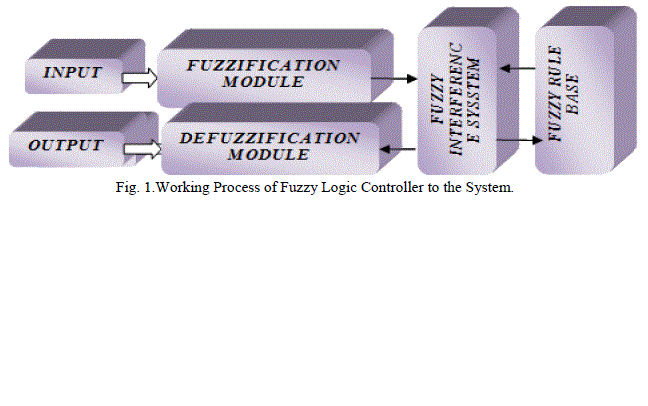 |
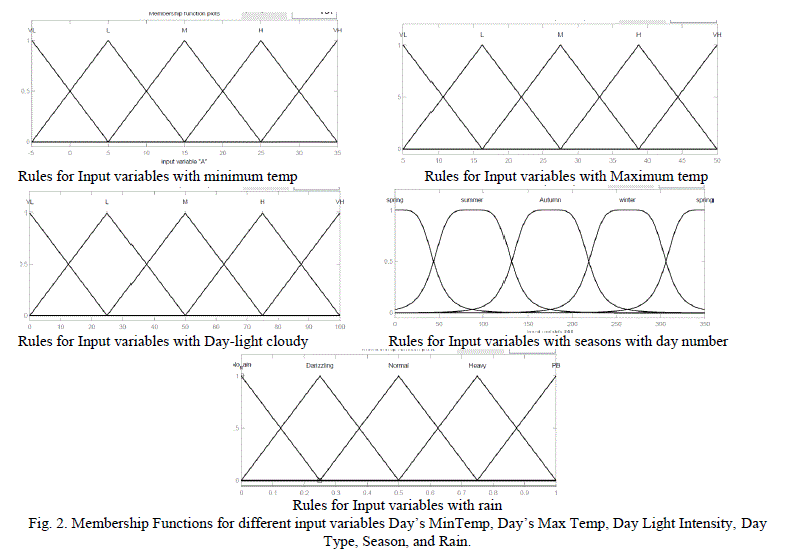 |
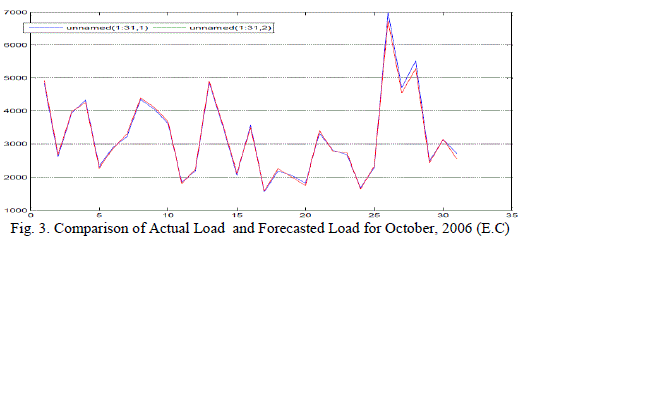 |
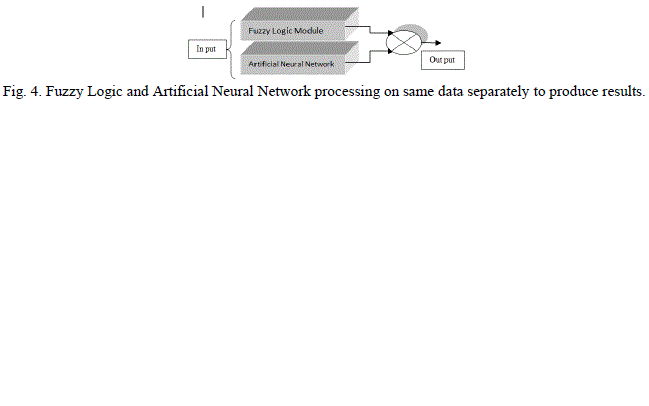 |
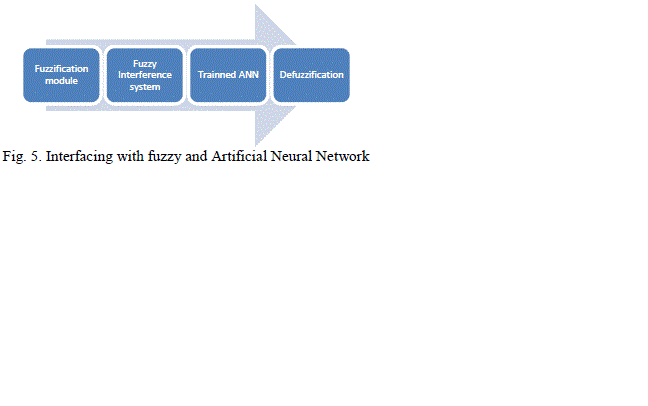 |
| Figure 1 |
Figure 2 |
Figure 3 |
Figure 4 |
Figure 5 |
|
| |
References |
- T. S. Pang, P. L. So,K. Y. See, and A. Kamarul, “Modeling and Analysis of Common-Mode Current Propagation in Broadband Power-Line CommunicationNetworks,” IEEE Transactions on Power Delivery, Vol. 23, No. 1, January 2008, pp.171-179.
- P. Mlynek, M. Koutny, and J. Misurec, “Power line Modelling for creating PLC communication system,” International Journal of Communications, Issue1, Volume 4,2010, pp.13-21.
- Holger Philipps,“Performance Measurements Of Powerline Channels At High Frequencies,” International Conference on PLC, 1 998,pp. 229-237.
- Manfred Zimmermann and Klaus Dostert, “A Multipath Model for the Powerline Channel,”IEEE Transactions on Communications, Vol. 50, NO. 4, APRIL 2002, pp.553-559.
- Stefano Galli and Thomas Banwell, “A Novel Approach To The Modeling of the Indoor Power Line Channel—Part II: Transfer Function And Its Properties,” IEEETransactions On Power Delivery, Vol. 20, NO. 3, July 2005 pp. 1869-1878.
- Vinay Kumar Chandna , and Mir Zahida, “Effect of Varying Topologies on the Performance of Broadband over Power Line,” IEEE Transactions On Power Delivery,Vol. 25, No. 4, October 2010, pp. 2371-2375.
- Gerardo Laguna and Ricardo Barr´on, “Survey on Indoor Power Line Communication Channel Modeling,” IEEE Electronics, Robotics and Automotive MechanicsConference 2008,pp.163-168
- Seema Arora, Vinay Kumar Chandna and Mini S. Thomas, “Modeling of Broadband Indoor Power Line Channel for Various Network Topologies”, IEEE PESInnovative Smart Grid Technologies, ISGT 2011, pp. 229-235.
- Sami Barmada, Member, IEEE, Antonino Musolino, and Marco Raugi, “Innovative Model for Time-Varying Power Line Communication Channel ResponseEvaluation”, IEEE Journal On Selected Areas In Communications, Vol. 24, No. 7, July 2006 pp.1317-1326
- Shabana Mehfuz, Abhishek Sinha and Mini S. Thomas, “Modeling of Indoor power line for Substation monitoring using Broadband Power line Communications”,TENCON, Hyderabad, 2008, pp.1-4.
- Er Liu, Yangpo Gao, Osama Bilal and Timo Korhonen, “Broadband Characterization Of Indoor Power line Channel”.IEEE International Conference onCommunications 2005, VOL 2, pp. 901-905.
- Andrea M. Tonello and Tao Zheng, “Bottom-Up Transfer Function Generator for Broadband PLC Statistical Channel Modeling,” IEEE Conference 2009, pp.7-12.
|